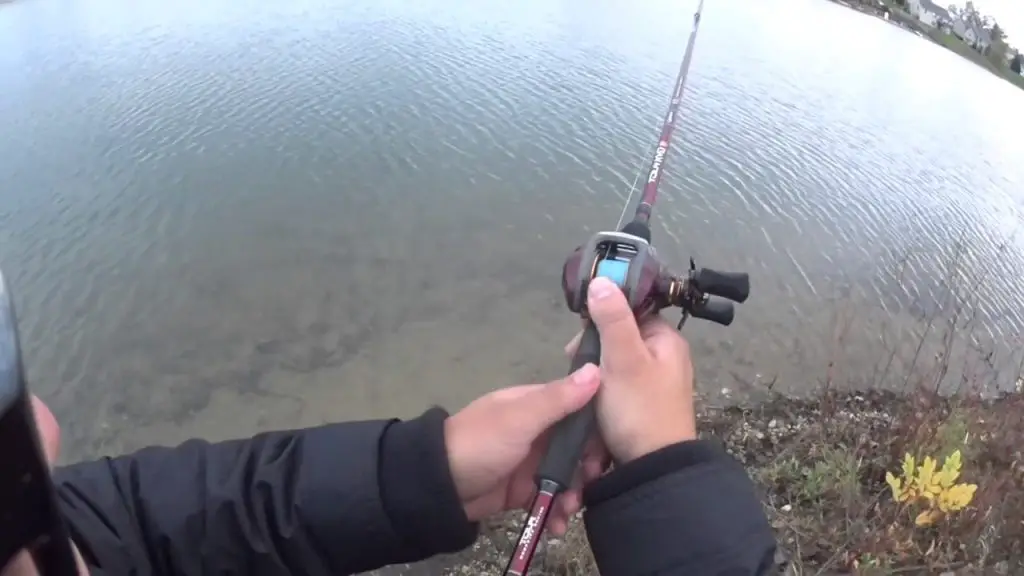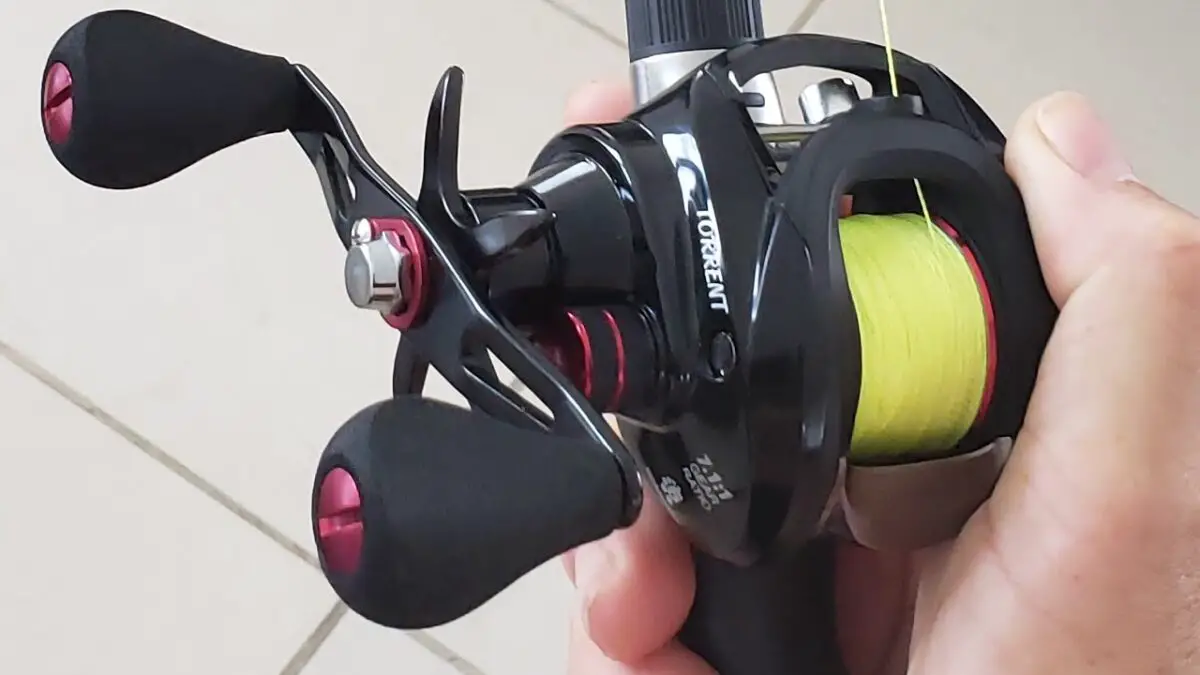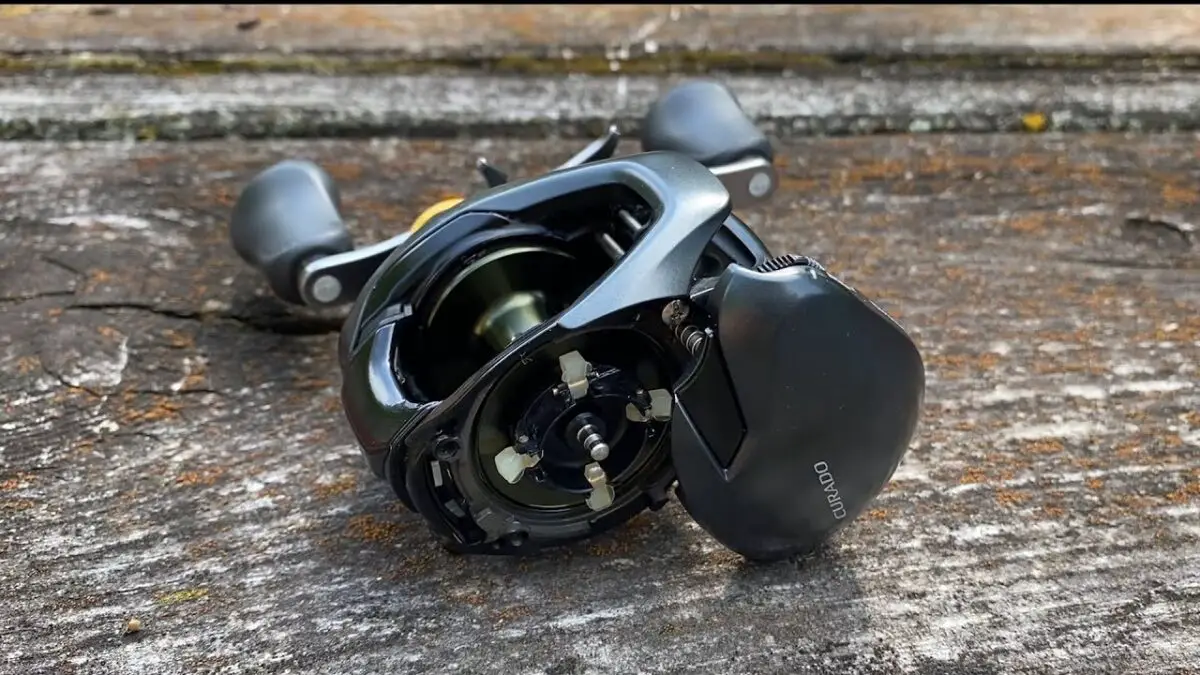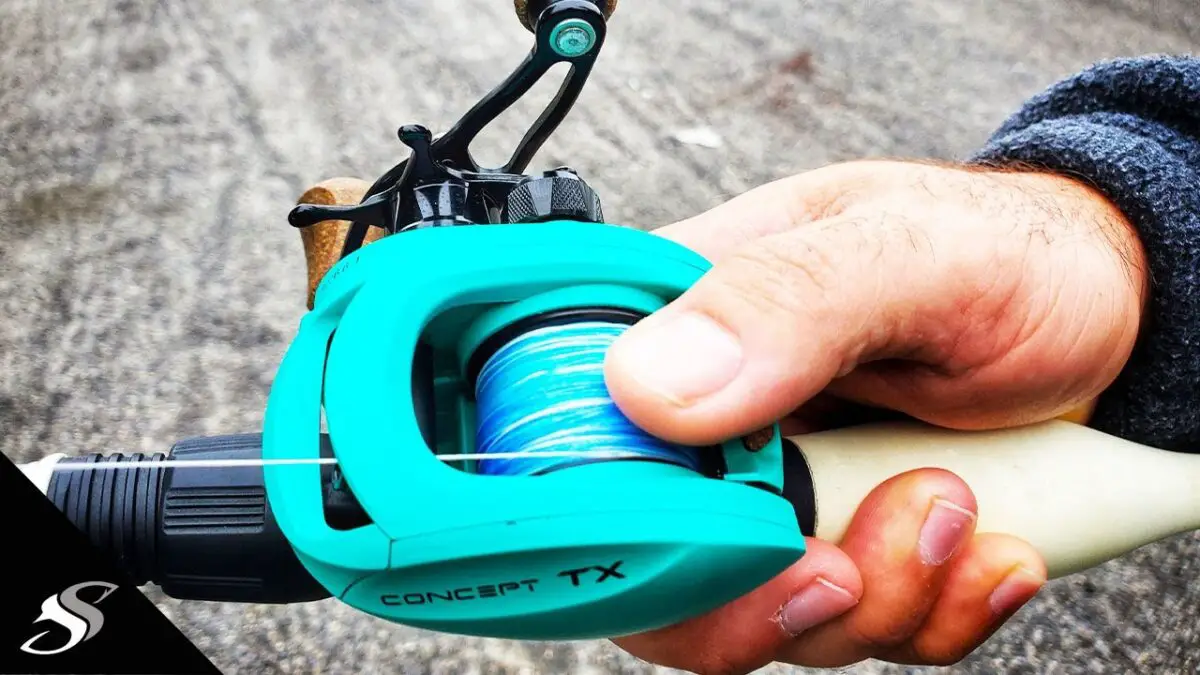To cast baitcasters further, use a longer, flexible rod, lighter line with smaller diameter, and aerodynamic lures. Ensure the reel is well-maintained and lubricated. Adjust the brake system and spool tension for optimal control. Master a smooth, fluid casting motion with proper weight transfer and follow-through.
The advantages you get from using a baitcasting reel instead of a spinning or spincast reel are abundantly clear to anglers who have fished with these three types. Once you begin using a baitcaster, you’ll find a clear learning curve if you want to get the most out of a good baitcasting setup.
I’ve compiled this article as a handy guide to squeeze the maximum distance out of your baitcaster reel. In the following sections, you’ll find crucial advice that will serve as some of the best tips to cast baitcasters further.

Table of Contents
Why Do Baitcasters Cast Further?
In addition to having more line capacity, being able to use heavier line and having more sensitivity than spinning reels, one of the main benefits for baitcaster fishermen is that they’re able to cast out to much greater distances using them.
Perhaps you’ve just started using a baitcasting rod and reel in your fishing ventures, whether in freshwater or saltwater environments. You’ve likely watched some professional and expert anglers on television or online videos effortlessly whip their baitcaster rod around and send their lure sailing out many dozens of yards.
Here are some of our most helpful tips to cast baitcasters further and unlock the true potential of your reel.

1. Proper Rod Action and Lure Weight
One of the most overlooked aspects of fishing and a common mistake that beginner or novice anglers make is not having the proper rod action for the type of lure they’re using. This mostly comes down to the weight of your lure and whether or not the rod’s action will allow it to have the adequate ability to act like a spring-loaded catapult to launch your lure out in the way it needs to be.
This was one of the mistakes that held my own casting ability back for longer than I’d like to admit. Thankfully, a more accomplished angler was able to help me understand the relationship between rod action, lure weight and casting distance. In short, you need to have a rod capable of ‘loading’ up at the right moment during your casting motion.
A good rule of thumb is that if you’re using a lure lighter than ½ ounces, you should use a rod that’s no more than a medium power. The rod must have enough flex relative to the lure weight to maximize the energy you exert on each cast. Most anglers start out with a medium-heavy power rod for their first baitcaster setup, but you should only use this type of rod with lures at least ¾ ounces in weight.
2. Reduce the Amount of Line On Your Spool
Another very common mistake that anglers often make without even knowing it is putting too much line on their reel. Most reel manufacturers will indicate on the packaging or in the instruction manual the right amount of line that should be put onto each reel type. If you think you can get away with packing on as much line as you want, think again.
In fact, less is usually more when putting line onto any baitcasting reel. With a baitcaster, the line comes off the spool itself and having too much line on the spool will weigh it down and hamper its ability to spin and release line as it should.
Another problem that usually arises when you have too much line on your baitcaster is backlashing, which nobody wants to deal with more than they have to. Always be sure to check the manufacturer’s recommendations for your particular reel regarding line type, diameter (or pound test) and how much line the reel is designed to hold.
3. Align Your Line Guide
The line guide is the small circular opening in front of the spool and scrolls back and forth as you reel your line in. It’s designed to ensure that the line is collected evenly across the entire spool and prevents it from bunching up on one side or another. Many anglers are not aware that having their line guide in the right position before making each cast plays a significant role in how much distance they’re able to get with each cast.
If the line guide is on one end of the spool, it will create more friction during the cast as it will have to travel all the way over before moving back in the other direction. It’s better to have your line guide in the middle of the spool as this will cut down on the distance it must travel until it reaches the end and returns back in the other direction.

4. Set The Brakes Correctly
Utilizing one brake setting on your baitcaster reel for any line or lure weight is not a great idea. This can be why so many anglers don’t get the distance they expect with a brand new reel that is said to have great casting distance. The main thing that should determine how much you adjust your brake settings is the type of line you’re using.
Braided line will always perform differently than fluoro or mono, which means you should adjust accordingly when swapping from one to the other. Braid is typically smaller in diameter than either fluoro or mono, which means you can lessen the amount of brake pressure when using braided fishing line.

If you’re swapping from braid to mono or fluoro, you’ll want to increase the brake pressure slightly, especially if you’re an angler more prone to allowing your reel to backlash. Once you become an expert at handling your reel, you should work toward dialing down the brake pressure altogether as this will always decrease your casting distance to some degree.

5. Apply Proper Thumb Pressure
Professional anglers are usually masters when handling their baitcasting reel with proper thumb pressure. They know when to apply their thumb to the spool, when to let off completely and when to press down with a good amount of force. Understanding this balance and when or how to use your thumb to add pressure to the spool is one of the keys to unlocking greater casting distance.
Over time, you should learn that you’ll need to keep your thumb on the spool with a slight amount of pressure to better prevent backlashing the reel. A backlash occurs when the spool is rotating faster than the lure is pulling the line away from it.
To get the maximum casting distance with a baitcaster, you can learn to rely on your thumb to control/stop the spool instead of the reel’s braking system or tension. A good way to start doing this is to prepare to make a cast, but hold down on the thumb button and watch to see if the lure is falling away from the rod tip.
Adjust your tension level until the lure begins to fall slightly and begin practicing to use your thumb to stop the spool’s rotation on each cast. This will increase the risk of backlashing, but experienced anglers who understand when to press their thumb down on the spool and how much pressure is required will likely increase their casting distance.

6. Use a Larger Reel and a Longer Rod
If you’re looking to get more distance while fishing with a baitcaster, size, and length are two factors that certainly come into play. Professional anglers often talk about using longer rods with certain types of lures and bait presentations for a good reason. You can actually cast much further if you have a baitcaster rod and reel that are designed to maximize distance.
Longer rods are something to consider if you fish in exceptionally clear water where it’s crucial that you maintain the element of surprise. In addition to using a longer rod, you can consider using a larger baitcaster reel to cast farther.
Be sure to have the right type of rod action for the specific lure design and weight you plan to use, but having a bigger reel means you’ll be using a larger spool. Naturally, a larger spool will lend itself to casting farther than a smaller one.
7. Start Your Cast with More Line
There’s usually a sweet spot for any rod and reel where the angler knows just how much line to have between their lure and the rod tip before they initiate the casting motion. This often varies depending on what type of rod and reel you’re using, but it especially comes into play when using lures of differing weight.
If you watch some of the expert professional anglers on television or online videos, pay close attention to how much line they have between the rod tip and lure before making their cast. Some of the most accomplished professional fishermen will have quite a bit more line hanging off the end than you might typically see.
J.P. DeRose is a pro famous for his casting distance, but another angler who does this is Kevin VanDam, who is well-known for his mastery with a crankbait. VanDam actually covers the subject of casting farther with a baitcaster in this video and if you watch closely, you’ll see that he’s starting each cast with quite a bit more line hanging off the rod tip than most anglers typically have.
8. Follow-Through
In the vast majority of cases where an angler is dissatisfied with his or her baitcater’s casting distance, the cause can be traced back to their casting motion and technique. Poor technique will always hamper your casting distance and you can improve and cast significantly further by using the proper technique.
One of the most important parts of any angler’s cast is their follow-through. Too often, beginners or even experienced anglers mistakenly assume that they can rely on their reel to help them cast farther.
After you’ve made your cast, remain in the ‘follow-through’ position with your rod held out, pointed in the direction where you want the lure to land. In many cases, anglers cut their follow through short and start their retrieve prematurely. Like a great golf or baseball swing, the key is to have good follow-through motion.
Conclusion
Much more could be said about dialing in your reel, using the right type of line or lure, and having proper casting technique. However, the tips in this article should give any angler the right foundation to get started working on maximizing their casting distance. The key to getting dialed-in and getting the most distance out of each cast requires lots of practice.
